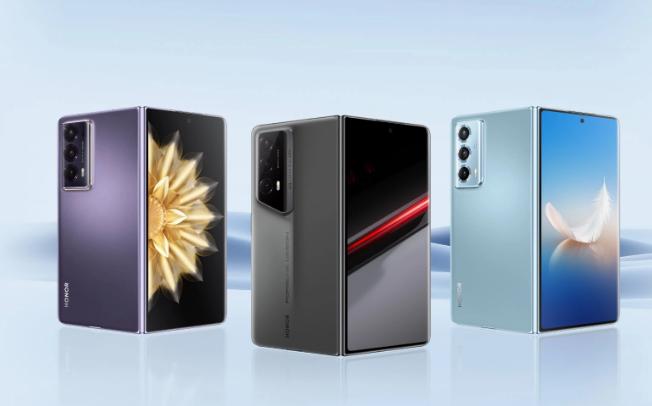Smartphone technology is evolving rapidly, and the latest innovation making waves is the foldable phone. These devices feature flexible screens and hinge mechanisms, allowing them to switch between a small, portable phone and a larger, tablet-like device. But how do they stack up against traditional smartphones in terms of design, functionality, durability, and cost? This blog delves into the key differences, advantages, and drawbacks to help you decide which type of smartphone suits your needs best.
What Is a Foldable Smartphone?
A foldable smartphone is an innovative type of mobile device equipped with a flexible OLED or AMOLED screen that can bend or fold without damage. The screen technology offers a larger display area when unfolded, perfect for multitasking, watching videos, and gaming. The key component enabling its transformative ability is the hinge mechanism, which ensures smooth transitions between different modes. This hinge design is crucial for maintaining the screen’s integrity over multiple foldings.
There are multiple form factors for foldable phones. The clamshell design folds like a traditional flip phone, while the book-like design offers a tablet-like experience with a larger screen when opened. Despite their large screens when unfolded, foldable smartphones are remarkably portable when folded. This makes them suitable for users who need a big screen but prefer a mobile device that’s easy to carry around. Furthermore, foldable smartphones usually incorporate the latest technology, such as high-performance processors, large batteries, multi-camera systems, and advanced software features, ensuring an exceptional user experience.

Key Differences Between Foldable Phones and Traditional Smartphones
Design and Form Factor
Traditional smartphones generally feature a single, rigid screen that doesn’t bend or fold, resulting in a more straightforward, bar-like form factor. Foldable phones, however, introduce a dynamic design with flexible screens and hinge mechanisms. The most common designs are the clamshell and book-like forms, enabling a transition between compact and expanded modes. This dual functionality can be a significant advantage for users who need both portability and a large display for various tasks.
Screen Durability and Protection
Durability is a critical consideration. Traditional smartphones have screens protected by robust glass, making them relatively resistant to scratches and drops. Foldable phones, however, use plastic or ultra-thin glass materials that are more flexible but can be more susceptible to scratches and damage. Although advancements in hinge technology, like HONOR’s ultra-light titanium hinge, contribute to their durability, foldable screens still require more careful handling compared to their traditional counterparts.
User Experience and Multitasking
Foldable phones offer enhanced user experiences, particularly in multitasking. With a larger, flexible screen, users can run multiple apps concurrently, split screens, and do more complex tasks simultaneously. Traditional smartphones, while functional, don’t offer the same level of multitasking capability due to their smaller screen size. This makes foldable phones particularly beneficial for productivity and entertainment, offering a richer, more versatile experience.
Are Foldable Phones More Functional Than Traditional Smartphones?
Productivity and Multitasking
Foldable phones excel in productivity and multitasking. Their large, flexible displays enable users to run multiple applications at once, enhancing efficiency and convenience. For instance, you can compose emails, browse the web, and engage in video calls all at the same time. Traditional smartphones, while competent, usually don’t provide the same level of multitasking because of their more limited screen real estate.
Gaming and Entertainment
When it comes to gaming and entertainment, foldable phones have the upper hand. Their larger screens deliver a more immersive experience for watching videos, playing games, and using multimedia applications. The flexibility to switch between a compact phone and a tablet-like screen adds convenience and versatility. Traditional smartphones, however, offer a straightforward, reliable display quality but with less immersive potential.
Camera and Photography Features
Foldable smartphones frequently come with advanced camera systems, often on par with or superior to those found in traditional smartphones. Features like multiple lenses, superior apertures, and sophisticated photo software enhance image quality. For example, the HONOR Magic V2’s 50MP main camera ensures greater sharpness and dynamic range. However, both foldable and traditional smartphones deliver excellent photography experiences, depending on the specific model and its features.
What Are the Pros and Cons of Foldable Phones?
Advantages of Foldable Phones
One significant advantage of foldable phones is their versatility. They combine the portability of a traditional smartphone with the expanded screen real estate of a tablet. This dual functionality is perfect for multitasking, gaming, and media consumption. The advanced technology typically incorporated in foldable phones, such as high-performance processors and advanced camera systems, enhances the overall user experience. Another advantage is the cutting-edge design. Devices like HONOR’s foldable phones feature ultra-thin bodies, groundbreaking silicon-carbon batteries for longer life, and eye protection technology to reduce strain during prolonged use. These features make foldable phones not only functional but also highly innovative.
Drawbacks of Foldable Phones
Despite their pros, foldable phones have some drawbacks. Durability remains a concern, as their flexible screens and hinge mechanisms can be more susceptible to damage compared to the robust glass screens on traditional smartphones. Although advancements like HONOR’s ultra-light titanium hinges improve durability, careful handling is still essential.
Additionally, foldable phones are generally more expensive than traditional smartphones, which can be a barrier for some users. The complex technology and innovative design that make foldable phones attractive also contribute to their higher price point. Repair costs can also be higher due to the intricacy of the design.

Finally, the market for foldable phones is still relatively new, meaning fewer choices and potentially less software optimization compared to the well-established traditional smartphone market.
Conclusion
Choosing between a foldable phone and a traditional smartphone depends on your individual needs and preferences. Foldable phones offer versatility, a larger display for multitasking, and the latest technological advancements, making them ideal for users who prioritize productivity and an immersive entertainment experience. However, they come with higher costs and potential durability concerns.
Traditional smartphones, on the other hand, provide reliable performance, established durability, and a straightforward user experience at generally lower price points. They are better suited for users who need a dependable and robust device without the additional complexity and cost of a foldable screen.
In conclusion, both types of smartphones have their unique advantages and disadvantages. Carefully weigh these factors to decide which smartphone best fits your lifestyle and requirements.
